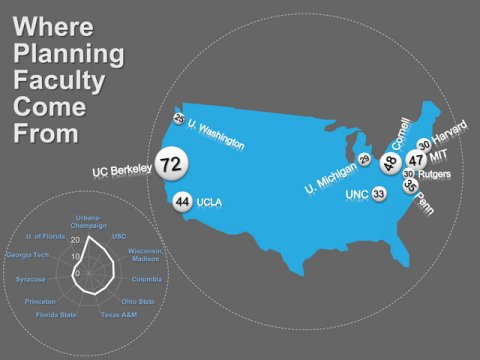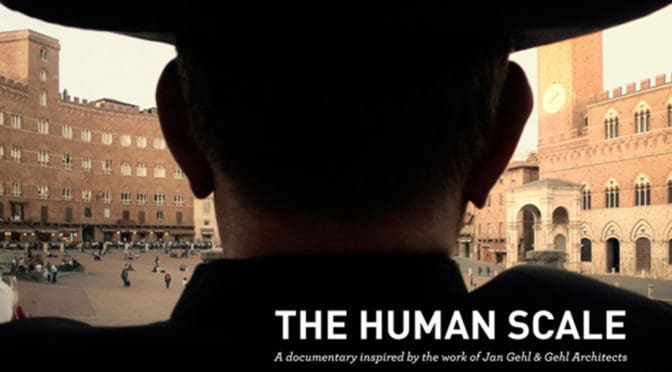 Planning Naked | June 2015
Planning Naked | June 2015
by Dr. Mark David Major, AICP, CNU-A
Observations on the June 2015 issue of Planning Magazine.
Cover: An indication arrow on the cover? Seriously? How can APA be trusted to design our communities when they don’t even know how to design a magazine cover?

Having said that, this is really one of the best Planning Magazine issues in a long time, for the most part.
1. “Walking in Jacob’s Footsteps” (page 4): I wholeheartedly approve of the concept behind the Jane’s Walk organization (www.JanesWalk.org) and I’m pleased to see Planning Magazine feature a prominent news piece about it.
2. “AARP Tool Quantifies Livability” (page 5): The goals of AARP’s Livability Index appear commendable (the devil is, of course, in the details of the data input) but the reliance on census blocks indicates an inherently insensitivity to urban block-to-block and street segment-to-segment variations commonplace in traditional urbanism. I’m also tied of this faux affordability debate (“At 2.5 times the U.S. median cost, the housing is not very affordable, but you can’t have it all”). At its core, this is a simple supply and demand question. After 60 years of suburban sprawl in the USA, there is an insufficient supply of walkable, traditional neighborhoods so demand is high, hence it costs more. And the U.S. median housing cost figure does not factor in associated costs of living in one particular type of area compared to others (owning multiple cars, gas and insurance costs, cost of time cost to commute, HOA costs, etc.).
3. “Michigan Ups Investment with Crowdfunding” (page 6): “This investment strategy allows businesses to publicly recruit all investors, not just the several million or so defined as accredited investors by the U.S. Securities Exchange Commission.” Think about that sentence for a moment. If people are developing innovative investment solutions to get around Federal regulators, then there is something fundamentally wrong with those regulations as written and/or enforced. The potential of crowdfunding is exciting as long as our political leaders don’t poison the well.
 4. “Great Park Audit Exposes Problems” (page 7): So this is what a planning quagmire looks like! “The master plan was killed… by its own hubris.” That should be on the planning profession’s epithet. It seems like the design and financing concept was flawed from the beginning; corruption thrives under such circumstances. I suspects there’s more to this story.
4. “Great Park Audit Exposes Problems” (page 7): So this is what a planning quagmire looks like! “The master plan was killed… by its own hubris.” That should be on the planning profession’s epithet. It seems like the design and financing concept was flawed from the beginning; corruption thrives under such circumstances. I suspects there’s more to this story.
5. Interesting series of articles on beach access/erosion issues (“A Line in the Sand” by Heather Boerner, page 8-15 including related articles). Highlights: “This fictional line (mean high- and low-tide lines) has only created trouble between private land owners and the public” (Jennifer Sullivan, FSU College of Law, now Florida House of Representatives member for the 31st District, perhaps someone to watch in the futre?). “The city, along with the stakeholders, will need to work to preserve the beach forever” (Linda Tucker, Isle of Palms, SC City Administrator)…. compared that impossible, static view of the world to a dynamic, realistic one… “or they retreat from the coastline” (i.e. the standard human solution to ecological changes for thousands of years)… “erosion can’t be avoided.”
6. Excellent article by Rebecca Leonard of Design Workshop about Green Infrastructure and Tactical Urbanism (“Green Infrastructure Grows Up”, page 16-21). However, I am quickly getting tired of the practice of acronym listings in these Planning Magazine articles for public and non-profit agencies, organizations, and programs. Poor Richard: It isn’t the quantity of the acronyms that matter but the quality of their (letter) characters.
7. Interesting how Chuck Ware of Design Workshop inserts a (admittedly striking) graphic on worldwide energy depletion into an article principally about affordable housing in Saudi Arabia to make the link between ecological challenges and development patterns (“Saudi Arabia’s Quest for Affordable Housing, page 22-27).
8. Another excellent article on modeling the long-term costs of alternative planning strategies in Belize (“A ‘Blue Economy’ for Belize by Ilima Loomis, page 28-32). That these modeling techniques with a “robust scientific basis” emerge from a consortium of environmental groups and academic departments – and not the planning profession or its academic departments – speaks volumes.
9. “Out of the Box, into the Scenario” (page 33-35): Article on voodoo science (“decreasing ability of traditional modeling techniques to forecast future traffic accurately”). Maybe that’s because it never did accurately forecast to begin with? Just spit-balling here.
10. “Senior-Friendly Transportation Options (page 36-37) kinda misses the larger point (“There’s also a focus on how to keep older drivers in their cars longer.”). We need to get everyone – regardless of age – out of their cars more frequently.
11. “Simplify That Code!” by Randall Arendt (page 38-41) on pared-down Form-Based Codes is another excellent article, adapted from Rural by Design (2015) by the same author.
I’m going to cut off this article here because this is a really good issue of Planning Magazine with a dense amount of useful material. I could easily list another 10 observations. As always, read with a critical eye to understand the underlying assumptions of the author(s) but this month’s issue somewhat helps to make up for disaster of the Special Issue on Transportation last month. Do we dare hope this represents progress?
Planning Naked is a regular feature with observations and comments about a recent issue of Planning: The Magazine of the American Planning Association.



 Planning Naked | May 2015
Planning Naked | May 2015


 Planning Naked | April 2015
Planning Naked | April 2015 5. Goodness, that looks like a space syntax model of Portland, Oregon on page 27 in the “Big Data” article!!! I don’t think it is but it looks like someone has been reading about space syntax.
5. Goodness, that looks like a space syntax model of Portland, Oregon on page 27 in the “Big Data” article!!! I don’t think it is but it looks like someone has been reading about space syntax.

